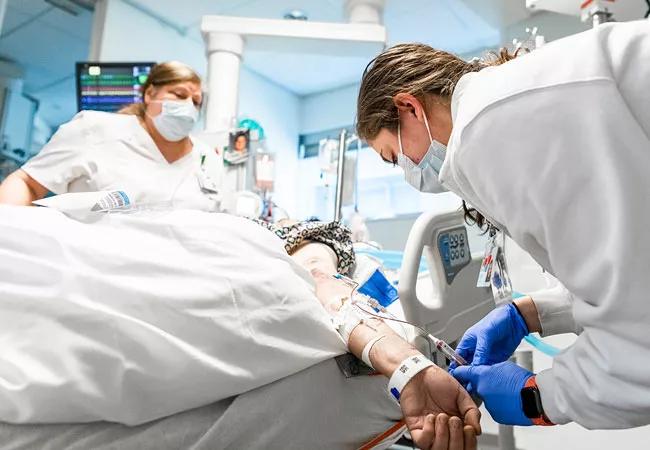Introduction
Medical malpractice is a complex area of law that results when a healthcare professional fails to meet the accepted standards of practice, causing harm to a patient. It can involve a wide array of issues, from surgical errors and misdiagnosis to improper medication dosages. Understanding the key factors in medical malpractice cases is crucial for both patients and practitioners to avoid pitfalls that could lead to devastating outcomes. In this article, we will delve into the essential components that play a role in these cases and provide strategies for avoiding common mistakes.
Understanding Medical Malpractice
Before we explore the pitfalls in medical malpractice cases, it's important to have a clear understanding of what constitutes medical malpractice. Generally, for a medical negligence claim to be established, four key elements must be demonstrated:
- Duty of Care: The healthcare provider had an obligation to the patient. Breach of Duty: The provider acted in a manner that did not meet the accepted standard of care. Causation: The breach of duty directly caused harm to the patient. Damages: The patient suffered measurable damages as a result.
The Importance of Proper Documentation
One of the most critical factors in medical malpractice cases is the proper documentation of patient encounters. Thorough and accurate medical records can serve as key pieces of evidence in proving or disproving claims of negligence. Steps to ensure proper documentation include:
Timeliness: Record patient information in a timely manner, ideally during or immediately after patient encounters. Clarity: Use clear, concise language and avoid medical jargon that could be misinterpreted. Comprehensiveness: Document all relevant medical history, patient complaints, treatment plans, and follow-up procedures. Signatures and Dates: Ensure that all entries are signed and dated to maintain a clear timeline of care.
Case Example
For instance, if a patient presents to an emergency room with chest pain, a thorough record of the patient's history, symptoms, and the care provided is essential. If the patient later suffers a heart attack or similar condition and claims negligence, comprehensive documentation can support the health provider's adherence to standard care protocols.
Effective Communication with Patients
Another factor in minimizing the risk of malpractice claims is effective communication with patients. This includes:
- Informed Consent: Patients must be fully informed about their treatment options, risks, and benefits before proceeding with care. Active Listening: Health practitioners must listen to patients’ concerns, questions, and symptoms, ensuring they feel heard and understood. Clear Explanations: When discussing diagnoses or treatment plans, healthcare providers should avoid complex terminology and explain in a way that is easy to understand.
Building Trust
Building a trusting relationship with patients can go a long way in preventing litigation. A patient who feels respected and well-informed is less likely to pursue a malpractice claim if https://www.prolume.com/understanding-workers-compensation-laws-what-youre-entitled-to/ adverse outcomes arise. Effective communication fosters a positive rapport and minimizes misunderstandings.
The Role of Continuing Education
In the rapidly evolving field of medicine, continuing education is vital for healthcare providers. New treatments, technologies, and protocols can change accepted standards of care. Key points regarding continuing education include:
Staying Updated: Healthcare professionals should engage in regular training to stay informed about the latest developments in their field. Attending Workshops: Participating in workshops and seminars can provide valuable knowledge and networking opportunities, enhancing professional skills.
Licensure and Certification
Healthcare professionals must keep their licenses current and adhere to the certification requirements in their practice areas. Failure to do so can not only lead to malpractice claims but can also result in disciplinary action from medical boards.
Common Pitfalls in Medical Malpractice Cases
Understanding common pitfalls can help healthcare providers avoid situations where they may face malpractice claims. These include:
- Neglecting Follow-Up Care: It is crucial to ensure appropriate follow-up after any treatment or diagnosis. Poor follow-up can lead to complications that may have otherwise been managed. Ignoring Patient History: Failing to consider a patient’s medical history may result in errors. For example, a patient with a known allergy or condition may receive inappropriate treatment without thorough consideration of their medical records. Rushing Diagnoses: In a rush to treat, providers may overlook critical symptoms or fail to conduct necessary tests.
Example of Misdiagnosis
A classic example of a pitfall is misdiagnosis. If a patient presents with symptoms of a serious illness and the provider hastily concludes it is a minor issue, the patient could suffer significant harm, leading to a potential malpractice lawsuit.
Fostering a Culture of Safety
Creating a culture of safety within a healthcare organization can significantly reduce the risk of malpractice claims. Implementing a system that prioritizes quality improvement and patient safety will lead to better care and fewer errors. This includes:
- Reporting Systems: Establishing non-punitive reporting systems for errors and near misses encourages staff to communicate issues without fear. Team Collaboration: Promoting teamwork among healthcare providers fosters cooperation, which can mitigate risks associated with individual errors. Patient Safety Initiatives: Regularly assessing and updating safety protocols reinforces the commitment to providing safe patient care.
Conclusion
Medical malpractice cases can have far-reaching consequences for both patients and healthcare providers. By understanding the key factors that contribute to these cases—including proper documentation, communication, education, and a culture of safety—providers can implement strategies to avoid common pitfalls. Awareness of the legal standards, continuous learning, and fostering a patient-centered environment are essential to minimizing the likelihood of malpractice claims. Ultimately, a proactive approach not only protects healthcare professionals but also ensures better patient care and outcomes.
